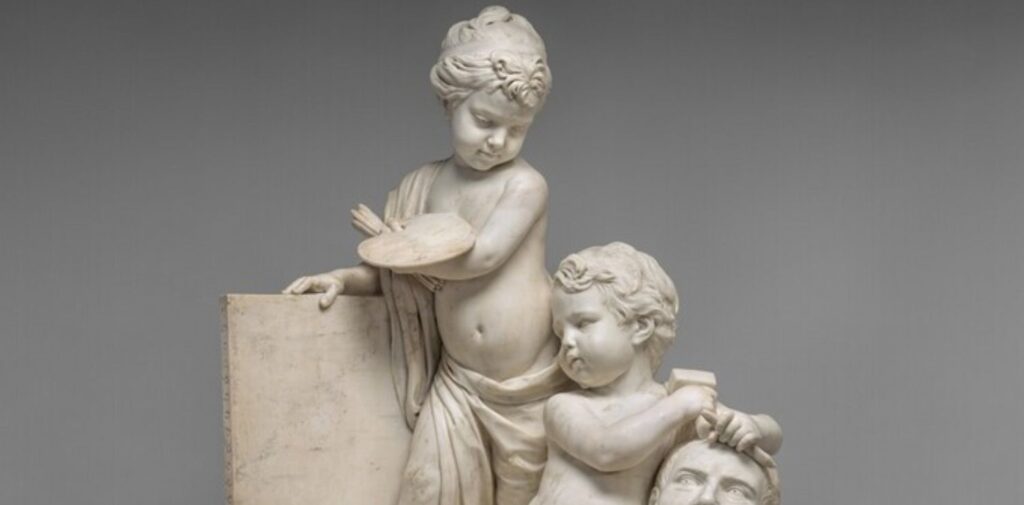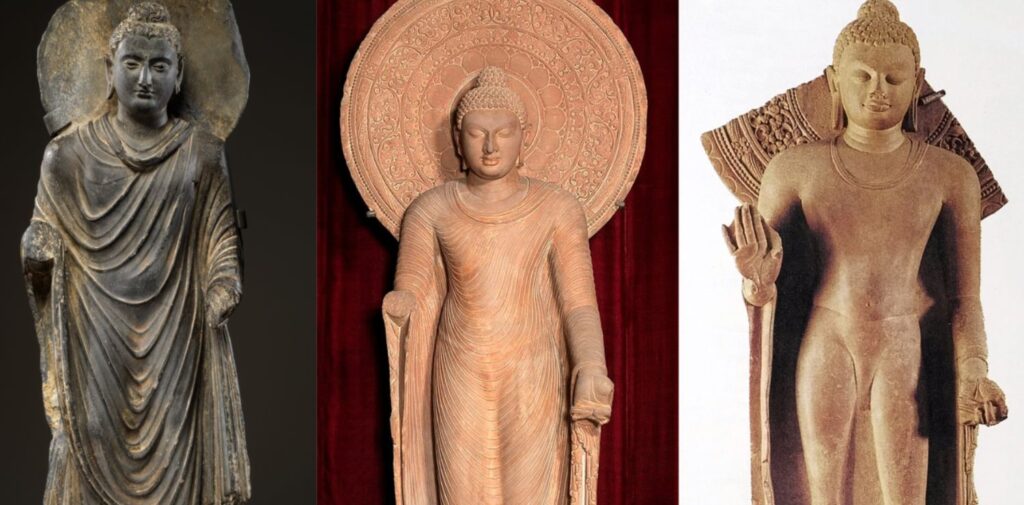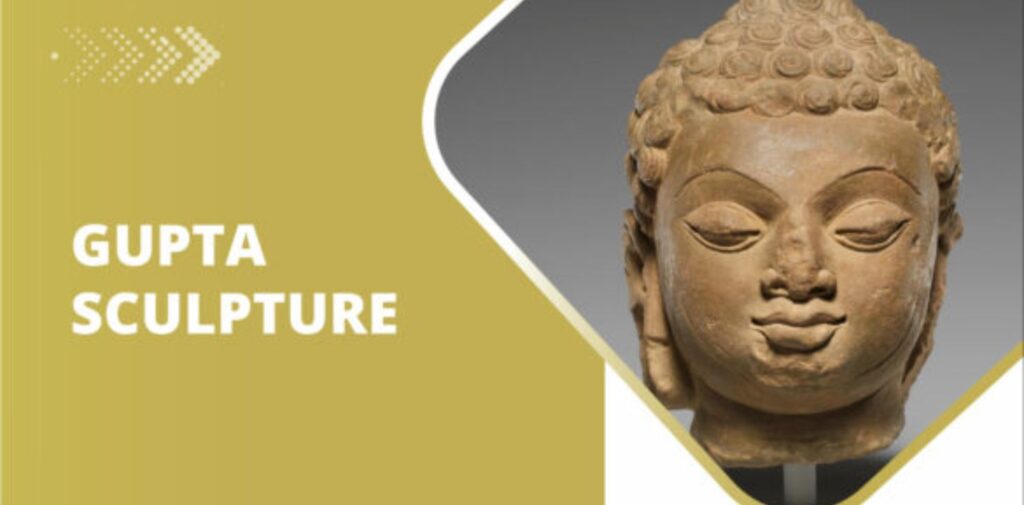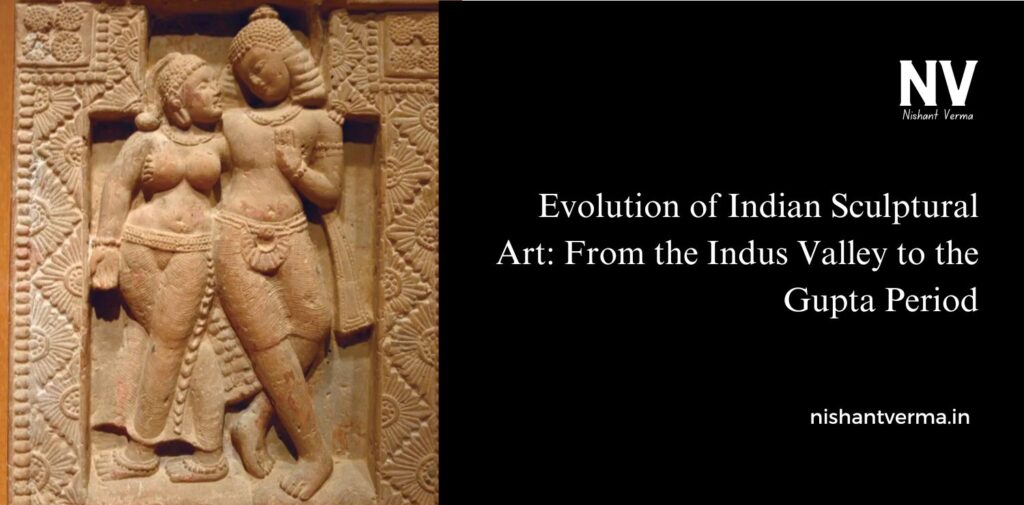India has a rich history when it comes to art, especially sculpture. Evolution of Indian Sculptural Art always told stories about gods, kings, and everyday life. Over thousands of years, the art of sculpting has evolved, growing more detailed, realistic, and beautiful. Sculptural art in India started in ancient times, and it changed a lot from the Indus Valley Civilization to the Gupta Period. This journey of sculptural art is fascinating, and in this article, we’ll explore how Indian sculptural art evolved over time, starting from the Indus Valley to the Gupta Empire.
What is Sculptural Art?
Sculptural art refers to creating three-dimensional art forms, usually out of materials like stone, metal, clay, or wood. Sculptures can be statues of gods, kings, animals, or even objects of everyday life. Indian sculptural art is known for its beauty, grace, and the way it tells stories about culture, religion, and history.
Now, let’s look at how sculptural art in India evolved over time, starting with the Indus Valley Civilization, one of the oldest civilizations in the world.

Sculptural Art in the Indus Valley Civilization
The Indus Valley Civilization (around 3300 to 1300 BCE) was one of the earliest cultures in India, and it gave rise to some of the first examples of sculptural art. The people of the Indus Valley created sculptures using materials like bronze, clay, and stone. These sculptures were often simple but still very beautiful.
Dancing Girl of Mohenjo-Daro
One of the most famous sculptures from the Indus Valley is the Dancing Girl of Mohenjo-Daro. This small bronze statue shows a young girl in a dancing pose, wearing jewelry and an elegant expression on her face. The sculpture is simple, but it shows great skill in its design. The Dancing Girl is one of the earliest examples of Indian sculptural art and tells us a lot about the creativity and skills of people during that time.
Animal Sculptures
Another important part of Indus Valley art was animal sculptures. The people of the Indus Valley made clay figurines of animals like elephants, bulls, and rhinoceroses. These figurines were often used as toys, but they also had religious meanings. The people of the Indus Valley might have believed that animals were connected to their gods.
Sculptural Art in the Maurya Period
The Maurya Empire (around 322 to 185 BCE) was another important period in Indian history that saw significant developments in sculpture. During this time, Indian sculpture started to become more detailed and symbolic. The famous Emperor Ashoka ruled during the Maurya period, and his reign had a big impact on Indian art and culture.
The Lion Capital of Ashoka
One of the most famous sculptures from the Maurya period is the Lion Capital of Ashoka. This sculpture was made during Emperor Ashoka’s rule and shows four lions sitting back to back. The Lion Capital is an example of the skill of Mauryan artists. It also has a lot of symbolism: the lion represents power, and the pillar itself represents the teachings of Emperor Ashoka, who spread Buddhism across India.
Stupas and Relics
In the Maurya period, the people also began to create stupas—large, dome-shaped structures that were used to house sacred relics, such as Buddha’s teachings. These stupas were often decorated with beautiful carvings and sculptures of Buddha and scenes from his life. The stupas at Sanchi, for example, are covered in beautiful sculptures that tell stories from the life of Buddha. These sculptures were simple but very meaningful, showing how art could be used to teach religious and moral lessons.

Sculptural Art in the Gupta Period
The Gupta Period (around 320 to 550 CE) is often called the Golden Age of Indian Art because it was a time of great growth and achievements in art, science, and culture. Gupta sculpture reached its peak in terms of beauty, skill, and detail. Artists during this time created sculptures that were more realistic, graceful, and lifelike.
Buddha Sculptures
One of the most important developments in Gupta sculpture was the creation of statues of Buddha. During the Gupta period, the images of Buddha became more detailed and lifelike. The Gupta artists gave Buddha a calm, peaceful expression and carefully carved his robes and features. These statues showed the influence of Buddhism in the Gupta period.
The Buddha statue at Sarnath is a famous example from the Gupta period. This sculpture shows Buddha sitting in a meditative posture, with a calm and serene face. The details of the statue are stunning, and it reflects the peaceful nature of Buddha’s teachings. The Gupta period marked a time when Buddhist sculpture became more refined and started to influence the rest of the world.
Hindu Sculptures
During the Gupta period, Hinduism also played an important role in art and sculpture. The Gupta rulers supported the creation of sculptures of Hindu gods and goddesses. These sculptures were more detailed and realistic than earlier ones. The statue of Lord Vishnu at Deogarh is an excellent example of Gupta Hindu sculpture. It shows Vishnu in a graceful pose, with intricate details and a calm expression. Sculptures of gods like Shiva, Vishnu, and Durga were also commonly made during this time.
These sculptures were not only beautiful but also symbolic. The gods and goddesses were often shown in poses that represented their power, wisdom, or peaceful nature. Gupta sculptures helped people connect with their gods and learn about their stories.
Temple Architecture and Sculpture
Another important development during the Gupta period was the creation of beautiful temples. Gupta rulers built many temples dedicated to different gods and goddesses. These temples were not just places for worship but also centers of art. The walls and interiors of the temples were decorated with beautiful sculptures of gods, goddesses, and mythological stories.
The Dashavatara Temple at Deogarh is one of the finest examples of Gupta temple architecture and sculpture. The temple has beautiful carvings of Hindu gods and intricate sculptures of Vishnu’s ten incarnations (called Dashavatara). The sculptures inside Gupta temples were created to show the importance of religion and connect people to their faith.

Key Features of Gupta Sculpture
Sculpture during the Gupta period was known for its high level of detail and realism. The key features of Gupta sculpture include:
- Elegance and Grace: Gupta sculptures were known for their graceful forms and serene expressions. The figures were often shown in calm and peaceful poses, reflecting the religious beliefs of the time.
- Attention to Detail: The sculptures were very detailed, with careful attention to the body, clothes, and facial features.
- Realism: Gupta sculptors began to show more realistic human forms. The statues were not stiff or formal; they had a lifelike quality.
- Symbolism: Many of the sculptures had deep meanings. They were created to represent gods, spiritual teachings, and important ideas.
Conclusion: Evolution of Indian Sculptural Art
The journey of sculptural art in India, from the Indus Valley Civilization to the Gupta period, shows how art evolved over time. In the Indus Valley, sculptures were simple and used for everyday purposes, while in the Maurya period, they became more symbolic and religious. The Gupta period saw the height of Indian sculpture, with artists creating realistic, graceful, and meaningful sculptures of gods, kings, and spiritual teachings.
Sculptural art not only tells us about the skill of ancient Indian artists but also reflects the culture, religion, and beliefs of the people during these times. From the Dancing Girl of Mohenjo-Daro to the Buddha statues of the Gupta period, each piece of sculpture is a window into India’s rich and vibrant history. The legacy of Indian sculptural art continues to inspire people today, reminding us of the creativity and spiritual depth of ancient India.




